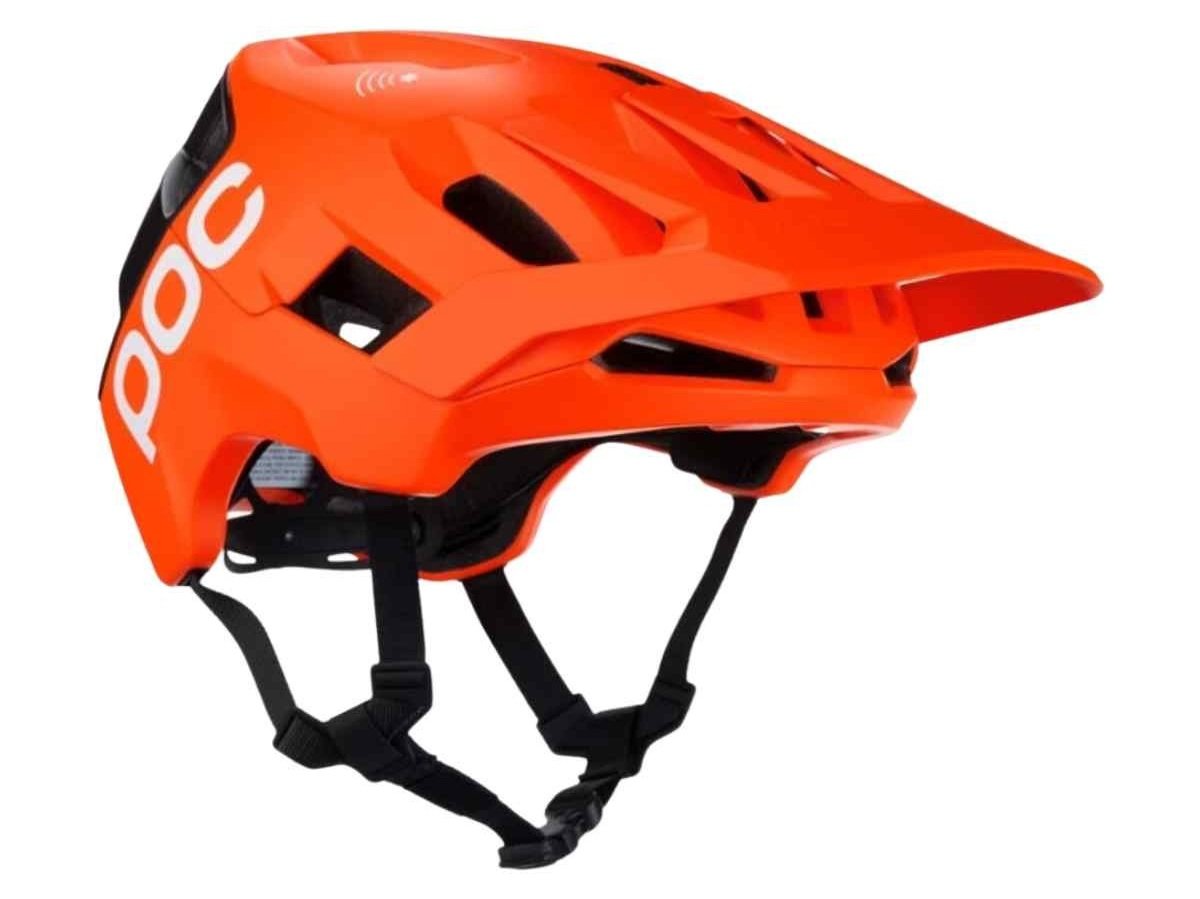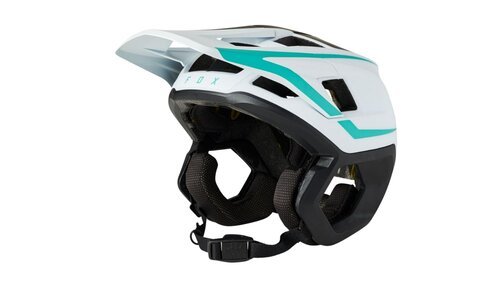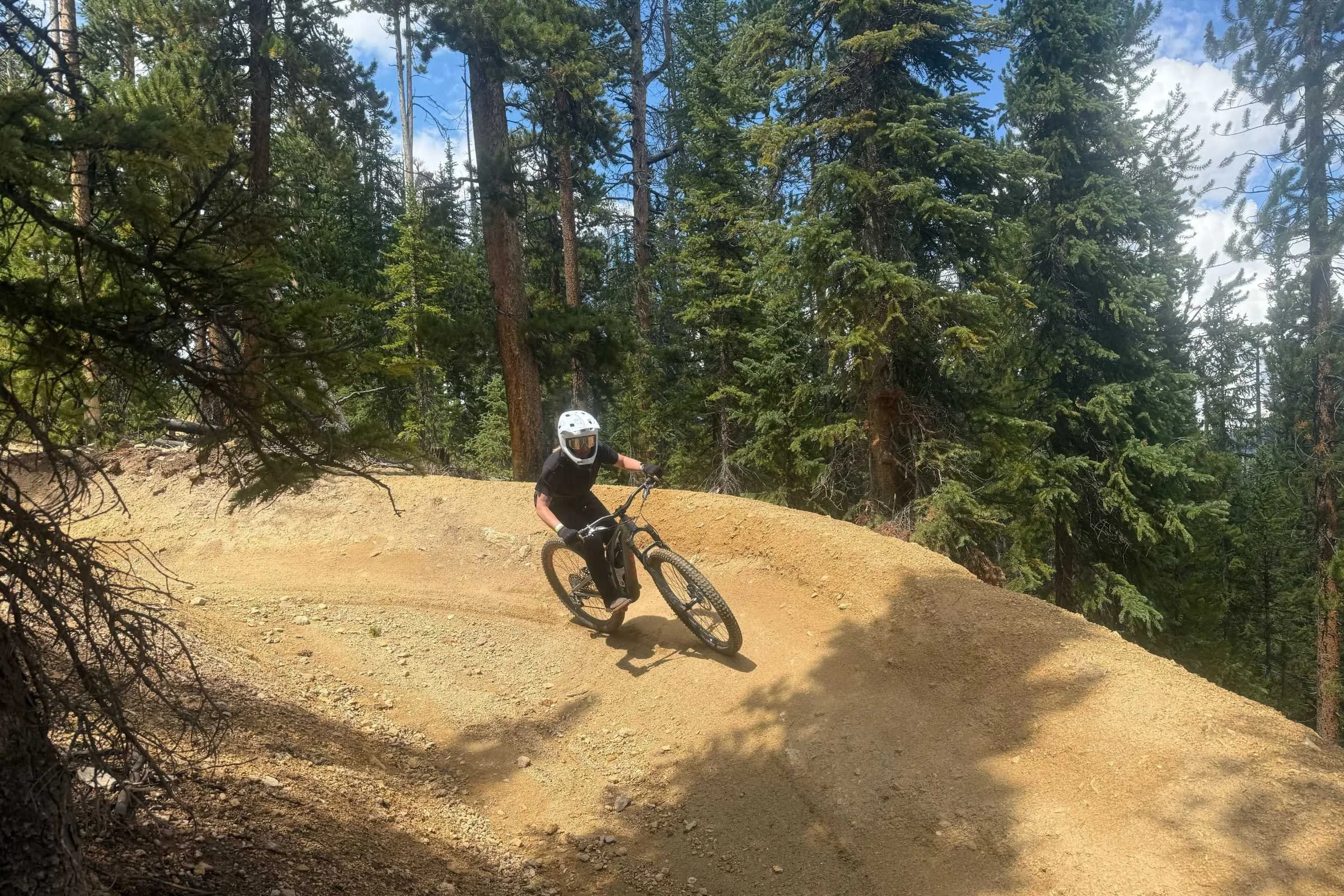Best Mountain Biking Helmets of 2025
The Top-Rated MTB Helmets for All Abilities and Budgets
September 5th, 2025, updated with a new overall winner, new high coverage half shell, new best budget winner, and new full-face winner, and new best full face helmet
Home > Gear Reviews > Cycling
Mountain bike helmets are the critical safety barrier between riders and potentially catastrophic head injuries. They're specially constructed to withstand high-impact crashes and rotational forces. Through comprehensive evaluation spanning over 50 helmet models and three years of field testing across Colorado's trail networks—including technical descents in Crested Butte, flow trails at Winter Park's Trestle Bike Park, and challenging enduro courses throughout the Front Range—we assessed the protection systems, comfort, venting, and performance of MTB helmets across all major mountain biking disciplines.
Our rigorous testing methodology prioritized Virginia Tech Helmet Lab safety ratings. We focused exclusively on helmets achieving top-tier protection standards for rotational impact protection systems including MIPS, SPIN, and WaveCel technologies. Testing protocols encompassed real-world performance across varied conditions, from sun-soaked desert trails to technical rocky terrain. We measured ventilation, fit, and durability under extended use scenarios over multiple riding seasons.
We evaluated critical safety features including dual-density EPS foam construction, coverage optimization for mountain biking-specific impact patterns, and advanced protection technologies like RECCO emergency beacons and NFC medical identification systems. Our analysis incorporated expert evaluations from leading cycling publications and hundreds of verified customer reviews. From there, we set performance benchmarks across budget, mid-range, and premium helmet categories.
Our top pick: The POC Cularis delivers the optimal combination of Virginia Tech 5-star safety rating, MIPS rotational protection, and exceptional comfort at a mid-range price point. It has 19 strategically-placed vents, antimicrobial padding, and a magnetic Fidlock buckle system that makes it the best choice for most mountain bikers who want reliable protection without compromising comfort.
Looking for road bike helmets? See the Best Road and Commuter Bike Helmets
We create reader-supported, objective gear reviews independently selected by our editors. This story may contain affiliate links, which help fund our website. When you click on the links to purchase gear, we may get a commission, without costing you an extra cent. Thank you for supporting our work and mission of outdoor coverage for every body! Learn more.
Comparison Table
| MTB HELMET | TREELINE AWARD | VT SAFETY RATING | ROTATIONAL IMPACT PROTECTION | BEST USE | VISOR | VENTING | SIZING | ADJUSTABLE? | WEIGHT |
|---|---|---|---|---|---|---|---|---|---|
| POC Cularis | Best Overall Read why |
5 stars | MIPS Air Node | Trail | Yes, adjustable | Excellent | S-L | Yes | 360 g (S) |
| POC Kortal Race MIPS | Best High Coverage Half-Shell MTB Helmet Read why |
Not listed | MIPS Integra | Trail / Enduro | Yes, adjustable | Good | XS/S - XL/XXL | Yes | 400 g (M/L) |
| Giro Manifest Spherical | Most Comfortable Read why |
5 stars | MIPS Spherical | Trail | Yes, adjustable | Excellent | S - L | Yes | 346 g (M) |
| Smith Forefront 2 MIPS with Aleck Crash Detection | Best High Tech Read why |
Not listed | MIPS | Trail / Enduro | Yes, adjustable | Good | S - L | Yes | 380 g (M) |
| Smith Convoy MIPS | Best Budget Read why |
Not on list | MIPS | Trail | Yes, fixed | Great | XS-XL | Yes | 290g (S) |
Interested in biking? Check out other Bike stories you may like:
The Best MTB Helmets
Best Overall MTB helmet: POC Cularis
Price: $260
Virginia Tech Rating: 5 stars (highest rated MTB helmet as of July 2025)
Rotational Impact Protection: MIPS Air Node
Helmet Style: Trail
Visor: Yes, adjustable
Sizing: S-L
Weight: 360g (small, as tested)
Additional Features: breakaway visor, RECCO
What we liked: excellent balance of protection, comfort, features, plenty of ventilation, comfortable in varied conditions and temperatures
What we didn’t like: expensive
The best MTB helmets provide a combination of safety features and comfort, and POC has nailed that with the Cularis. This cross-country and trail helmet is ideal for most mountain bikers outside of the XC race track or downhill bike park. The combo of an incredibly comfortable design with ample safety features makes this helmet our top choice for everyday trail riders who love to pedal before they descend. After hundreds of miles spent in this helmet, we love the fit, comfort, and features this helmet has to offer.
POC Cularis
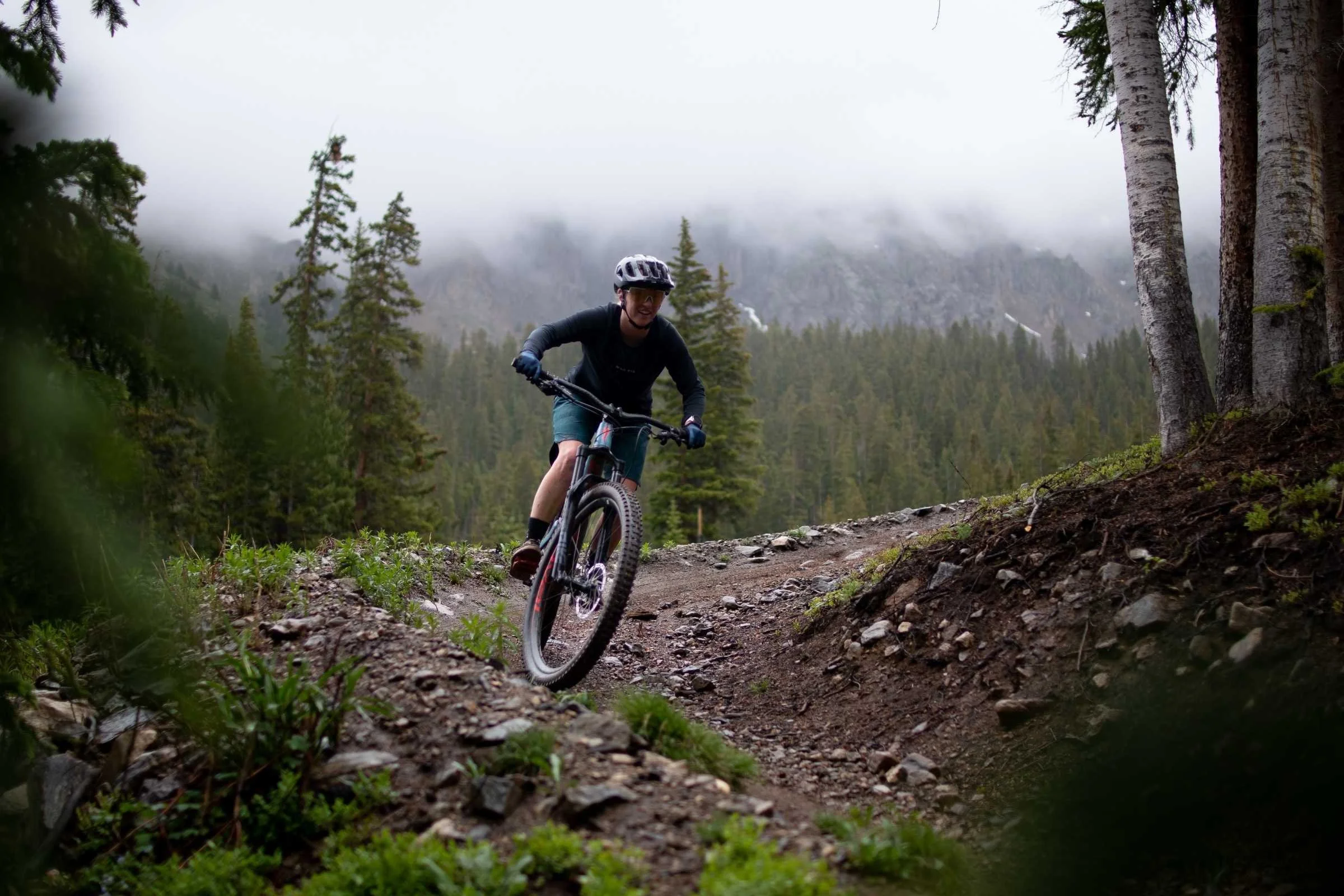
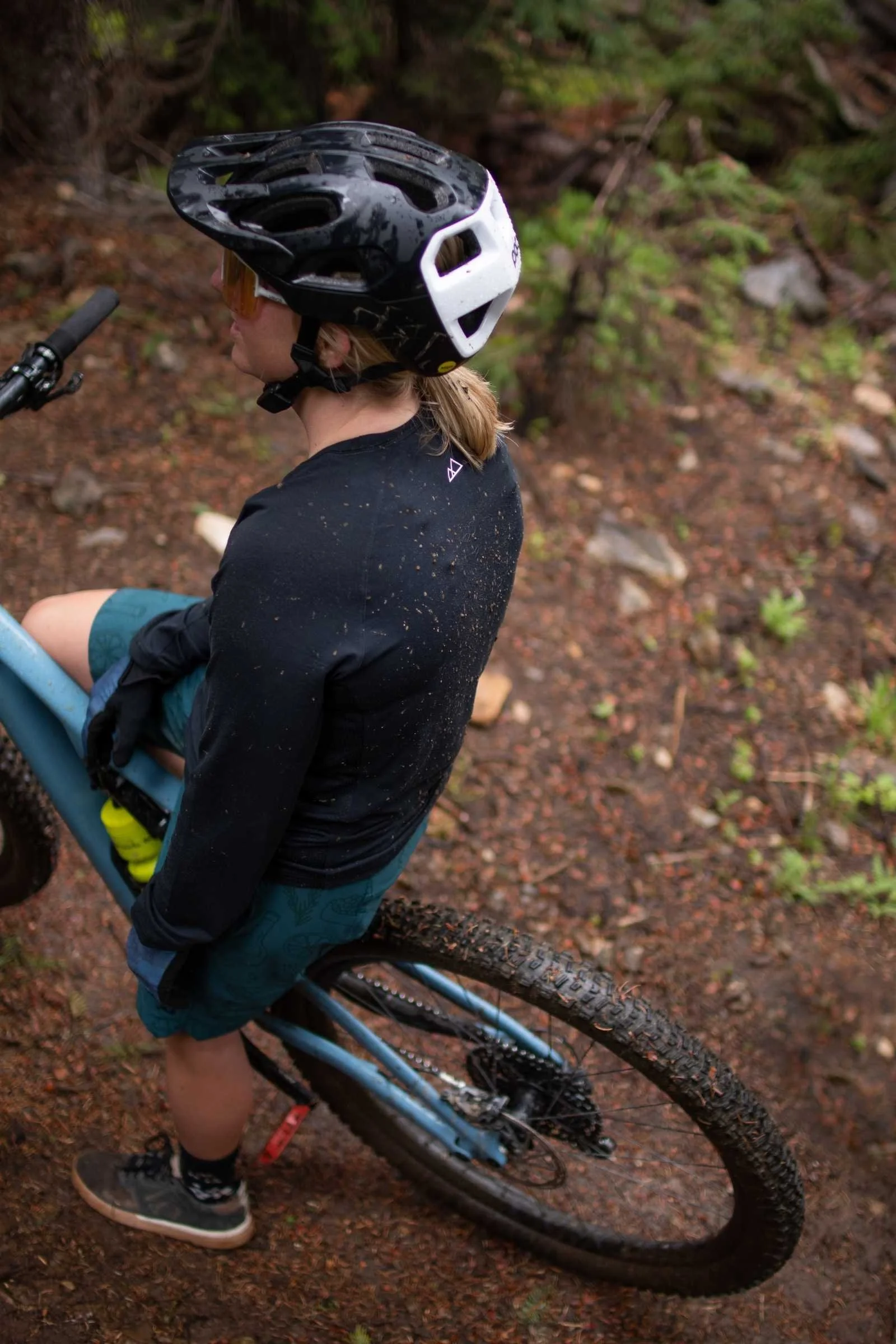
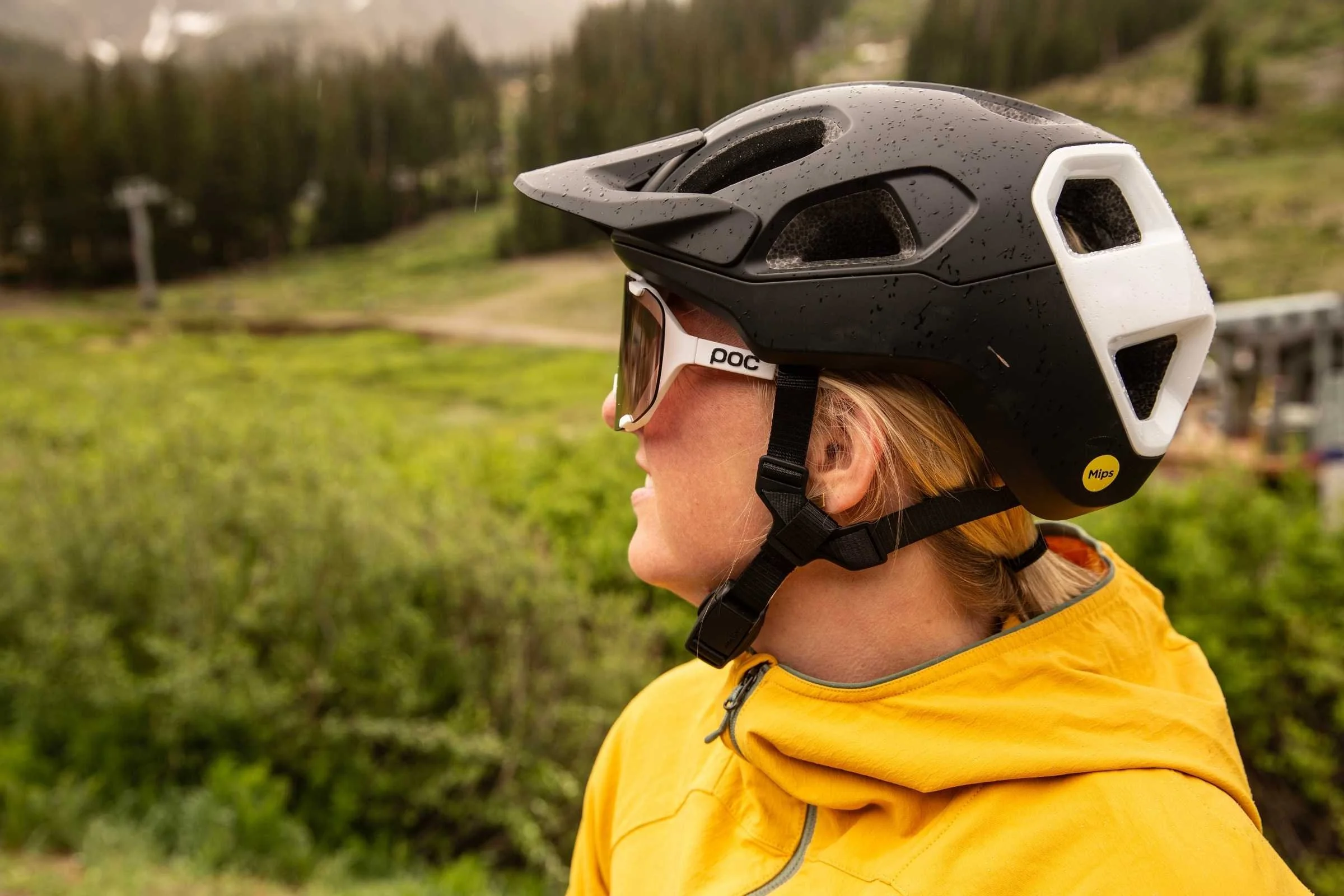
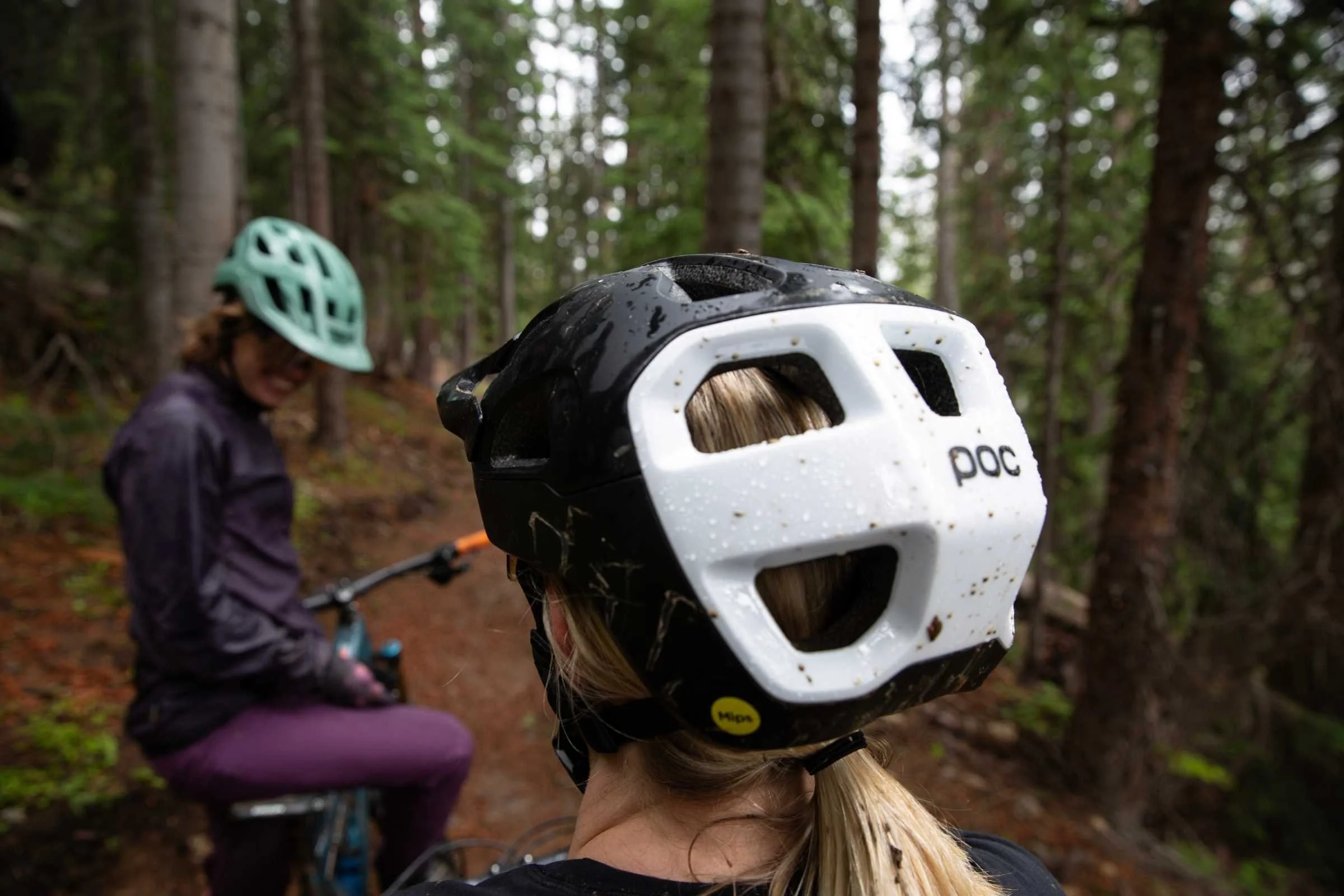
The Cularis is made with a lightweight PC shell and an expanded polystyrene (EPS) liner. Aramid bridges in the construction of the helmet also strengthen the helmet. For rotational impact protection, the helmet has Mips Air Node integrated into the foam padding. We think this version of Mips is much more comfortable and far less noticeable (in fact, it’s not really noticeable at all) than the traditional Mips cage-like integration that’s common in older models or less expensive helmets (like the Smith Convoy).
This shell has a fairly similar look to the POC Kortal Race Mips, our best high coverage pick and another very popular model from POC. But, the Cularis is lighter than the Kortal Race and more comfortable, too, especially for folks with smaller heads. In fact, the Cularis was a close second for the most comfortable helmet in our test, just behind the Giro Manifest Spherical. Throughout our testing, it was often a helmet we nearly forgot we were wearing.
The Cularis has 15 well sized vents that offer lots of airflow on hot days. And, the larger width of these vents made it easier to scratch a random itch on the trail—a minor detail that can turn into a real nuisance when you’re busy pedaling hard up a climb. The vent placement leaves room for you to store sunglasses on the helmet, and two small grippy pads on the inside of two of the vents help to keep your shades in place when stored there.
We also appreciate added features like the Fidlock magnetic buckle, which is easy to clip with gloves on. The breakaway visor is adjustable in three positions.
After testing over hundreds of miles of singletrack from the mountains of Colorado to the dry and dusty Utah desert, this helmet became a go-to for our testers and the combo of comfort, features, and high safety ratings has helped it earn its keep as our top pick for all-around trail riding.
Best High Coverage Half-Shell MTB Helmet: POC Kortal Race Mips
Price: $250
Virginia Tech Rating: Not on list
Rotational Impact Protection: MIPS Integra
Helmet Style: Trail/Enduro
Visor: Yes, adjustable
Sizing: XS/S-XL/XXL
Weight: 400g (M/L)
Additional Features: MIPS Integra, RECCO, NFC Medical ID Chip
What we liked: outstanding safety features, reinforced strength and durability, best coverage for a half-shell
What we didn’t like: deeper fit can get in the way of some sunglasses arms, on the heavy side
If top-shelf safety features are what you’re looking for in a bike helmet, then POC has you covered. The Kortal Race Mips is one of the newest in POC’s line of mountain bike helmets, and it has a tall stack of safety features, building on the popularity of their classic POC Tectal Race MIPS.
The Kortal Race is constructed with what POC calls a “unibody shell,” meaning the helmet is molded as one single unit for better strength. It also features aramid bridges, which reinforce the strength of the helmet and enhance overall durability.
The Kortal Race has the best coverage of any of the helmets we tested, with the shell coming down close to the ears and over the bottom of the back of the skull.
POC Kortal Race Mips
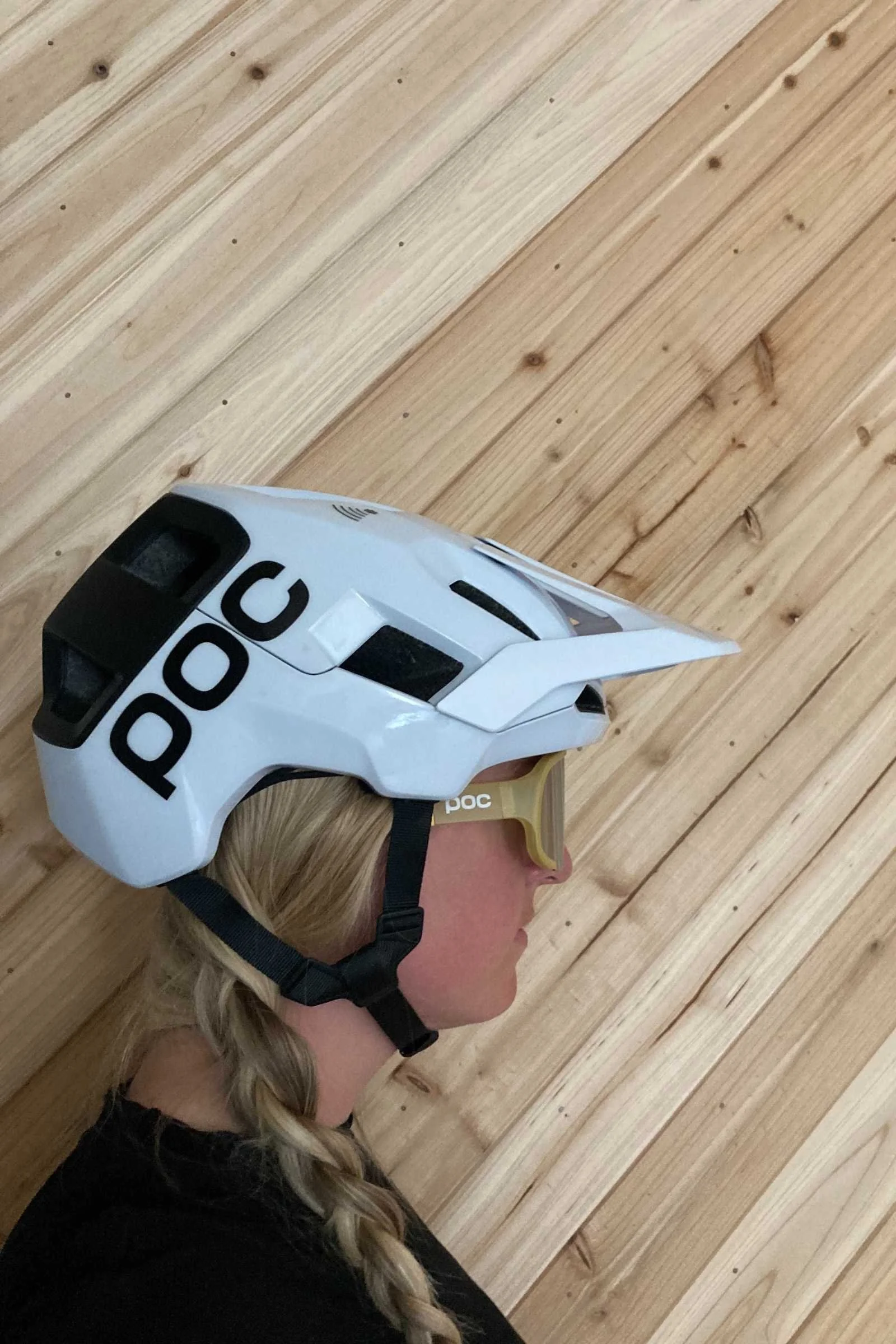
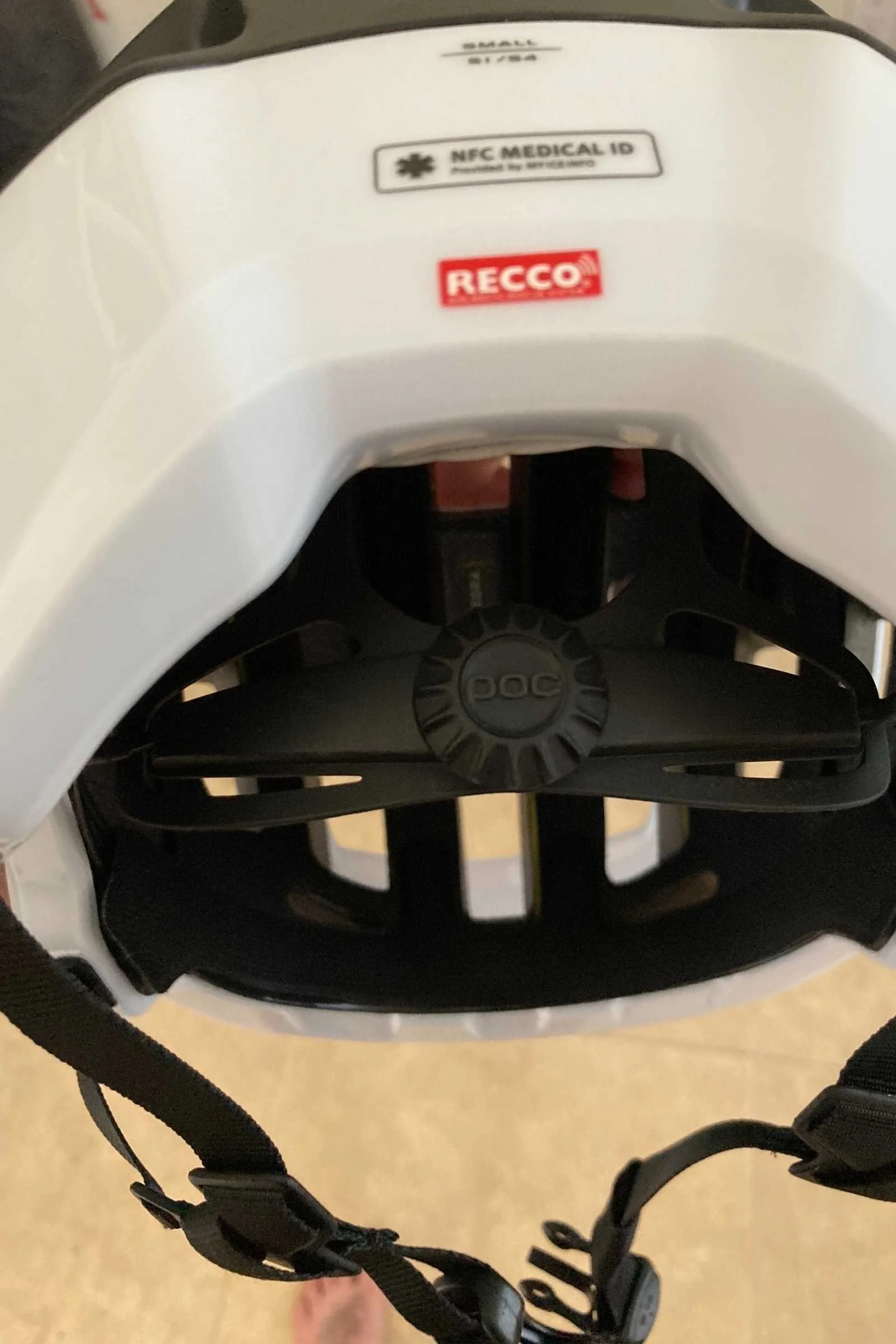
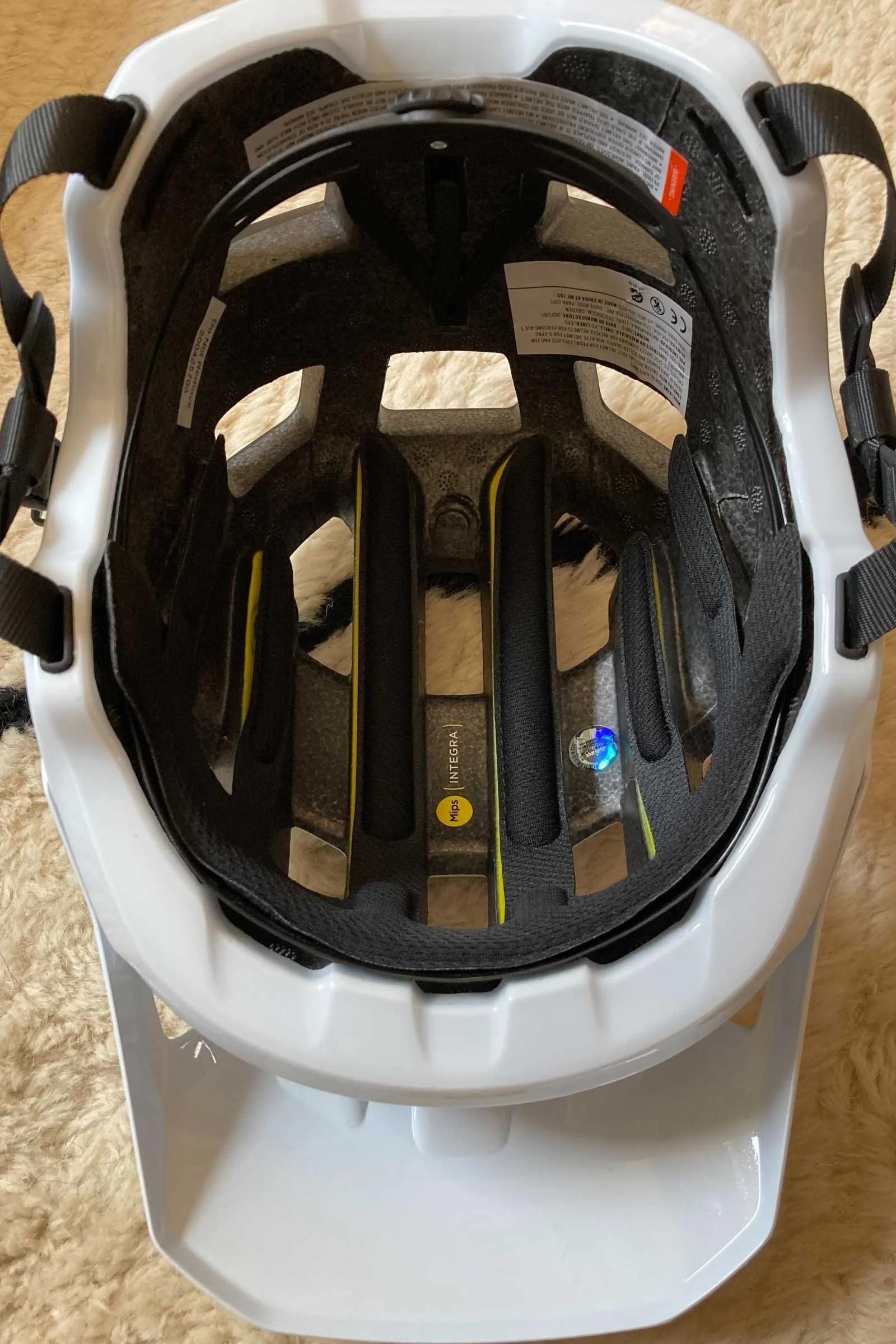
For rotational impact protection, POC uses Mips Integra in this helmet. Unlike traditional Mips, where a thin plastic lining sits inside the helmet shell to allow for a small amount of rotational movement, Mips Integra takes the same idea and integrates it into the padding in the helmet. This technology makes for a rotational impact protection system in the helmet that is equally effective but more comfortable and less noticeable than the original Mips design.
These features alone–the construction, coverage, and rotational impact protection system–make for a great mountain bike helmet. But POC went the extra mile. The Kortal Race Mips also includes features like a RECCO reflector for search and rescue, an NFC Medical ID that stores personal medical information in case of an emergency, and meets standards for the Dutch e-bike safety certification.
The helmet also has an adjustable visor that’s compatible with goggles and, notably, is designed to snap off in the event of a crash to help prevent additional injuries. On top of all this extra protection, the Kortal Race Mips has 17 vent channels to maximize airflow.
We’ve tested this helmet over multiple seasons, from the bike park to endurance races, and it’s remained a favorite. When testing the Kortal Race Mips helmet on sun-soaked desert trails, we found it very breezy and comfortable, despite its burly construction.
The Kortal Race fits true to size but has a deeper fit than any of the other helmets in our test. While this adds extra protection, we did find the helmet interfered with some sunglass arms. If you still want top-rated safety but prefer a lighter and lower profile helmet (especially for smaller heads), consider the POC Cularis instead.
But if you’re looking for a trail helmet that stands up to plenty of pedaling without forgoing high coverage and ample protection, we think the POC Kortal Race Mips is an excellent choice. Plus, we think it boasts some of the best style in our test, too.
Most Comfortable: Giro Manifest Spherical
Price: $260
Virginia Tech Rating: 5 stars
Rotational Impact Protection: MIPS Spherical
Helmet Style: Trail
Visor: Yes, somewhat adjustable
Sizing: S-L
Weight: 346g (M)
Additional Features: Spherical Technology for impact protection, antimicrobial padding, Fidlock magnetic buckle
What we liked: extreme comfort, lightweight, perfectly snug, great ventilation, lots of safety features, no pinching, works with lots of different pairs of sunglasses
What we didn’t like: on the expensive side
Safety is a given for us when we review bike helmets. If it doesn’t protect you, why bother strapping the thing to your head? While most top-end, brand name helmets are meeting those safety standards, not all helmets are created equal. With the Manifest Spherical, Giro delivers safety in spades, but what they also nail is comfort—a factory we think is equally as important. After all, if the helmet isn’t comfortable, you’re less likely to even wear it in the first place.
Of all the helmets we tested for this review, none were as comfortable as the Manifest. It’s light, fits perfectly snug, and has great ventilation. Plus, it’s got a blend of unique and proven safety technologies that make this helmet one of the best choices out there for trail riding.
Giro Manifest Spherical
Like all of our winners in this review, the Manifest has Mips integrated into the shell, which helps to protect against injury from rotational impacts. The Manifest also has what Giro calls Spherical technology—something the brand developed alongside Bell.
Essentially, the helmet is constructed with two different liners which operate somewhat like a ball-and-socket joint, according to Giro’s website. It also allows them to add different layers of dual-density foam within the helmet to protect against different types of impact. Virginia Tech gave this helmet 5 stars for safety. So yes, the safety features in this helmet are great, and one of the top reasons to purchase it. Fortunately, we didn’t have to test that feature in the field.
What we did notice when we were in the saddle is the supreme comfort of this helmet. From the minute we first tested it, it felt incredibly light and perfectly snug. It worked seamlessly with multiple pairs of sunglasses and never pinched near the temples or anywhere else. This is a helmet that you truly forget you’re even wearing. And while the POC Cularis is a close second in comfort, nothing in our test compared to the barely-there lightweight comfort of the Giro Manifest, with its comfortably snug fit and complete lack of any pressure points.
The vents are generous for warm days with lots of pedaling, and the fidlock buckle is simple to use. We’ve tested this helmet over multiple seasons of riding, primarily in Colorado, and the comfort is, hands down, what impressed the most.
The Manifest Spherical is certainly not cheap, but we believe you get what you pay for. While it’s at the upper end for price, there are many other helmets that top out with a similar price tag. And for the combo of comfort and protection, we think that price tag is worth it.
Best High Tech: Smith Forefront 2 with Aleck Crash Sensor
Price: $270
Virginia Tech Rating: Current Forefront (and this model) not on list
Rotational Impact Protection: MIPS
Helmet Style: trail/enduro
|Visor: Yes, Adjustable
Sizing: S-L
Weight: 14 ounces (M)
Additional Features: Sensor in helmet detects impact and sends emergency alerts, Koroyd technology, adjustable, goggle-compatible visor, integrated sunglass holders
The Smith Forefront has been a highly popular helmet among mountain bikers since its debut a few seasons ago. The updated Smith Forefront 2 brings the same coverage, protection, and style that riders have come to love.
It's our new winner for Best High Tech helmet because the Smith Forefront 2 is now also available with Aleck Crash Sensor technology. There is a rechargeable sensor built into the helmet which pairs with the Aleck app on your phone.
In the event of a crash, the sensor will detect the impact and, via the app, alert emergency help. The system also includes a feature that will alert specified contacts if you’ve been out of cell service longer than expected. All of this does come with an expected price hike, but if this safety feature is important to you, then this model should be at the top of your list.
Smith Forefront 2
The Smith Forefront MTB helmet is among the most popular on the market. Photo by Tom Callaghan.
The Smith Forefront 2 is a high-quality helmet. On its own, it doesn't offer the best bang for the buck as other helmets we considered. But if you want emerging technology that can alert for help, the version with the Aleck app may be worth it.
Best Budget MTB Helmet: Smith Convoy Mips
Price: $85
Virginia Tech Rating: Not on list
Rotational Impact Protection: MIPS
Helmet Style: trail
Visor: Yes, fixed
Sizing: XS-XL
Weight: 290g (S)
Additional Features: collarbone protection zone
What we liked: good value, large size range, surprisingly comfortable for the budget helmet category
What we didn’t like: visor is not adjustable, vents are narrow making it hard to scratch your head when wearing
You don’t always have to splurge to get ample protection for your dome for trail rides. Smith has proved that with the Convoy Mips helmet. While it doesn’t boast the same bells and whistles as others in our review, it doesn’t skimp on safety features like Mips rotational impact protection, and it’s a mere fraction of the price. We tested this helmet on trail rides around Colorado and nearly forgot we were even wearing a budget-oriented helmet.
Smith Convoy Mips
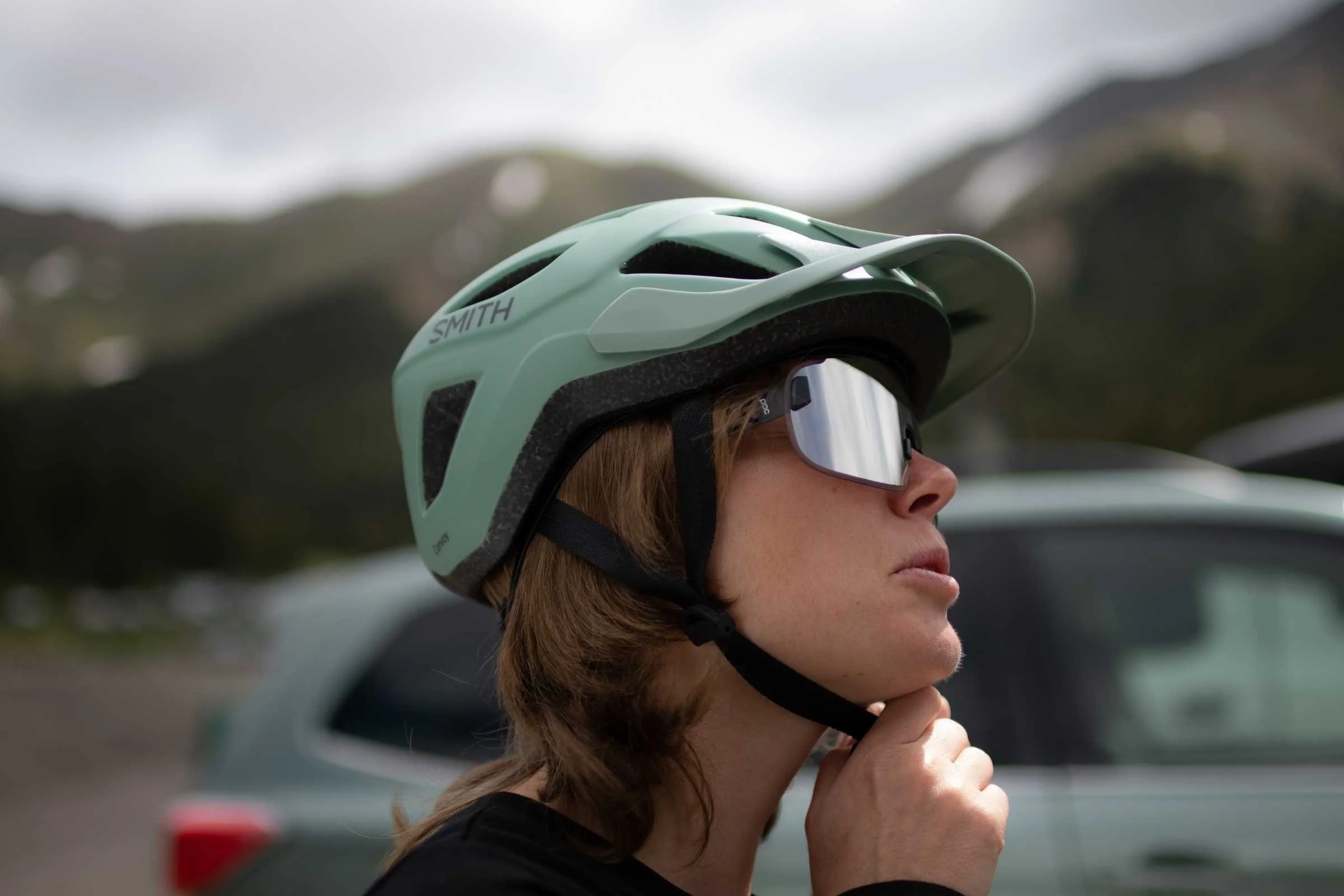
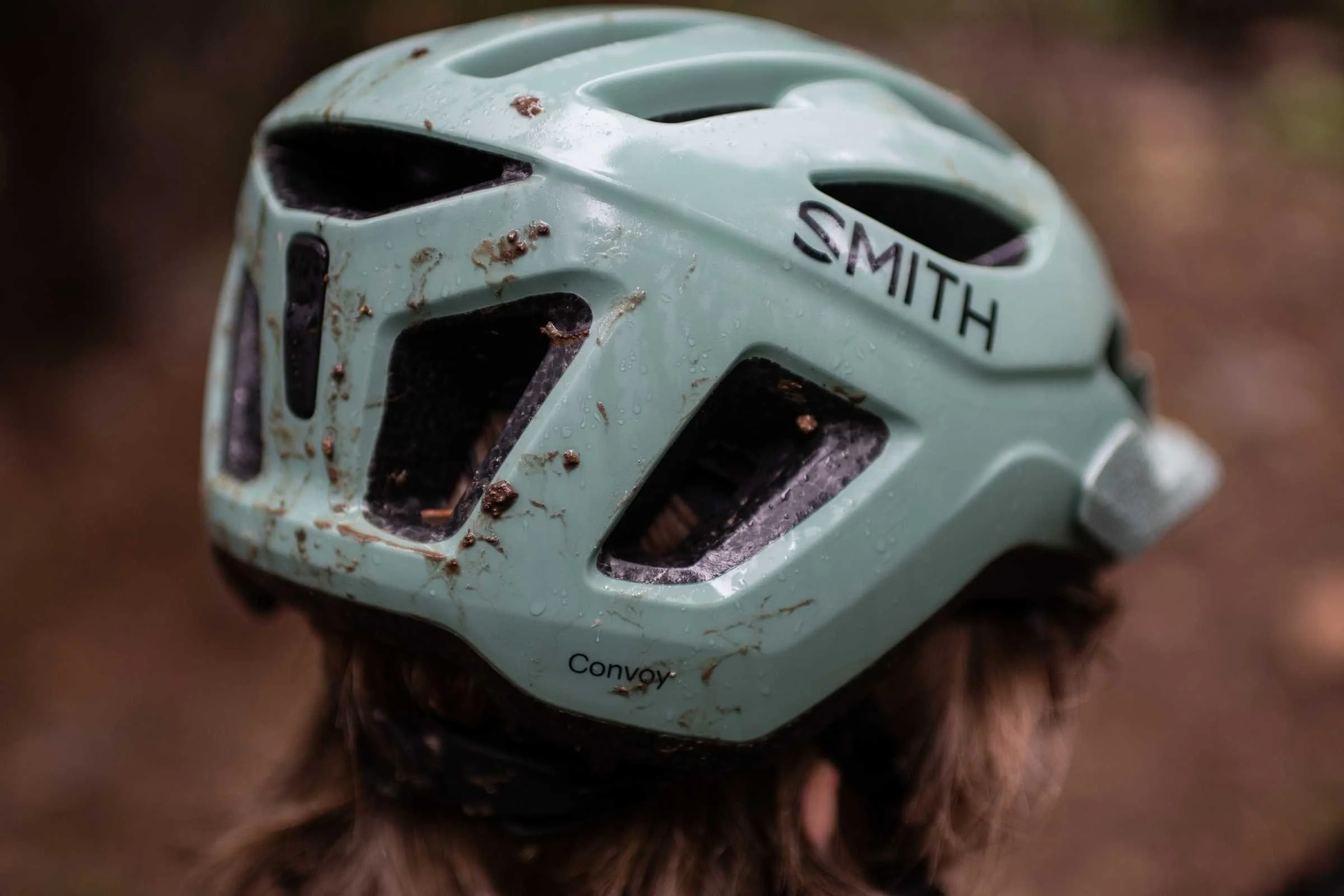
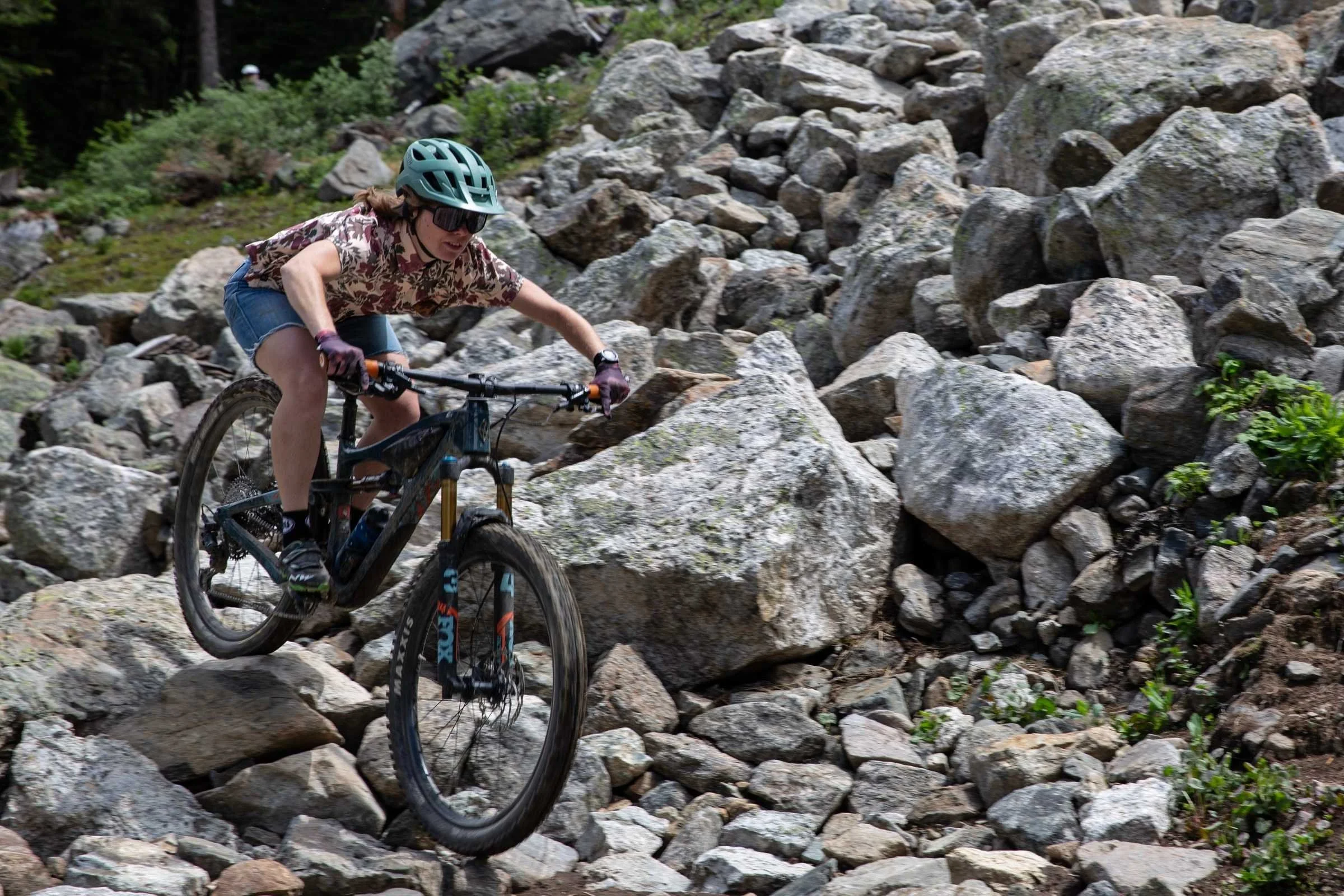
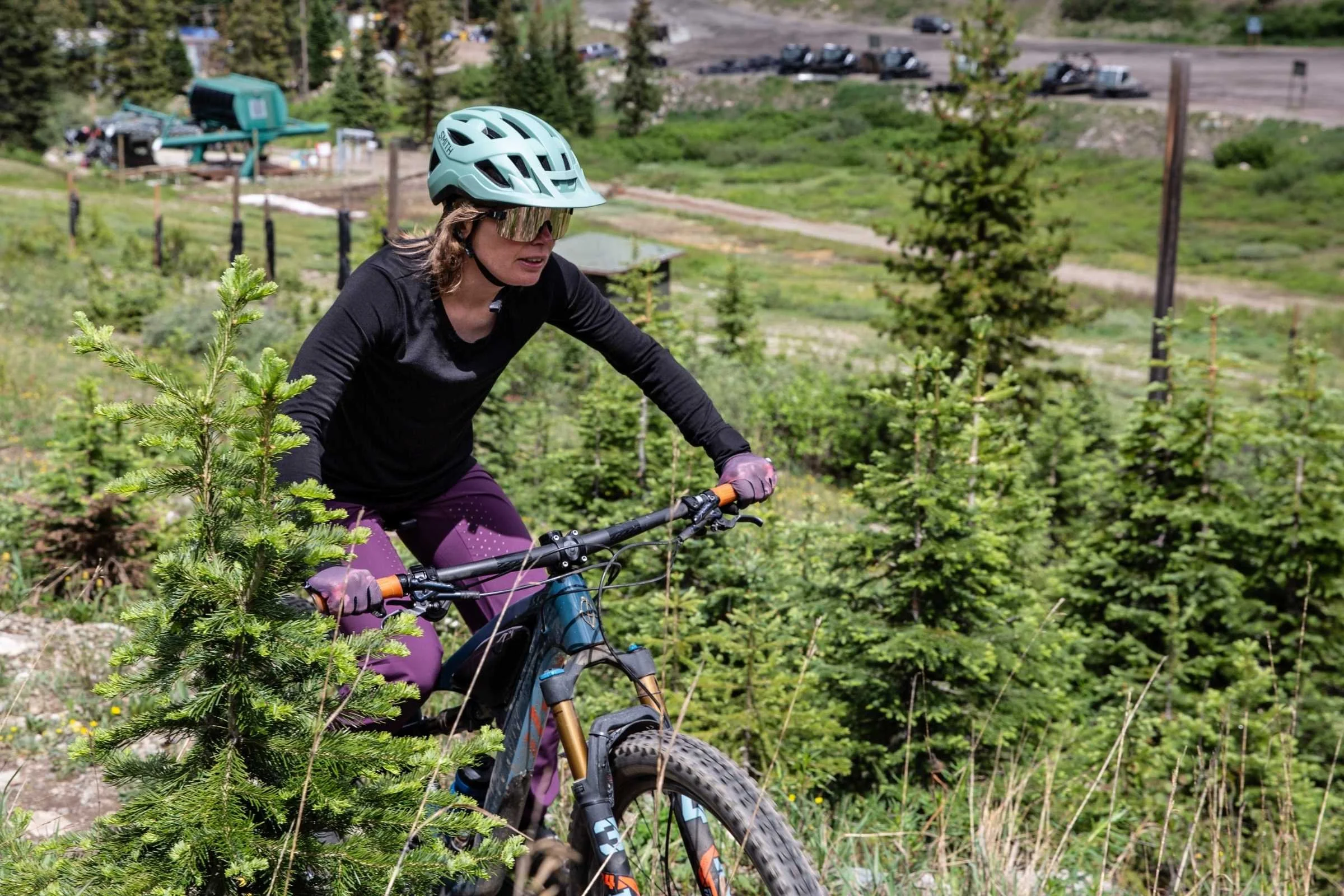
The Convoy is made with an in-mold construction that helps to keep the helmet lightweight. Traditional Mips is integrated into the lining of the helmet to help with rotational impact protection.
For comfort, the Convoy has 20 different vent channels that help with sweat management and airflow. There is a dial system for fit. One other aspect we like about this helmet, aside from the overall value, is that it’s offered in a wider size range—including XS and XL sizes—compared to most of our other winners which only have three size offerings.
We rode in the Convoy on trails around Colorado, including cool days paired with rock gardens and techy terrain, and hot days with plenty of pedaling. While it does lack some of the bonus features, like a magnetic buckle or a BOA fit system like what more premium Smith helmets have, we found the Convoy to be very comfortable and felt plenty safe when wearing it.
We will note that the newer Mips Air Node system, which is used in the POC Cularis and new Smith Forefront 3 helmets, is more comfortable overall than traditional Mips. But, those helmets are around triple the price of the Convoy. So given that, we still think the Convoy offers excellent value for budget minded riders who don’t want to skimp on safety.
Best Full Face MTB Helmet: Smith Hardline Composite
Price: $450
Virginia Tech Rating: Not on list
Rotational Impact Protection: MIPS Evolve Core, Koroyd
Helmet Style: downhill
Visor: Yes, adjustable
Sizing: S-L
Weight: 990g (M)
What we liked: lots of safety features and thoughtful design for aggressive downhill riding
What we didn’t like: not as much airflow as lighter full face helmets, on the heavy side
If riding downhill fast is your primary goal on a mountain bike, you’ll want the appropriate protection to match that goal—and that means a full face helmet to protect your noggin. The Smith Hardline is a fully-featured full-face helmet built for aggressive downhill riding. There are lighter, more enduro-style full face helmets out there, but the Hardline brings the feature package that dedicated downhill and freeride mountain bikers look for.
The Hardline helmet uses a composite shell. It has Koroyd coverage throughout the main body of the helmet as well as Mips for rotational impact protection. At the bottom of the helmet, there is a zone with extra padding that’s intended to help prevent collar bone injuries that could occur by contact with the helmet in the event of a crash.
Smith Hardline Composite
We tested the Hardline on fast and sometimes rowdy downhill trails at ski resorts in Colorado and found it to be both comfortable and protective. There are 13 vents of varying sizes spread out across the main part of the helmet, with honeycomb structures for airflow in the chin area. The helmet also includes additional padding of different thickness so that you can tailor the fit to your head. With the padding and chin strap adjusted well, our tester had no issues with the helmet bouncing around, rattling, or moving at all, even in sections of rough, technical rock gardens.
This isn’t a helmet we’d recommend if you’re going to do much pedaling at all. All that protection for the downhill comes at a price in both weight and breathability. If you’re looking for a more pedal-friendly, enduro-style full face, consider the Smith Mainline instead. But for days when you’re shuttling or riding lift-accessed trails, the Hardline offers top-level protection to give you a little more confidence for fast descents.
Other MTB Helmets we tested
With so many mountain bike helmets on the market today, there are many good options to choose from. While these didn’t quite make the cut for our top awards, we still think they’re worth considering if you’re in the market for a quality half-shell helmet.
Fox Speedframe Pro
Price: $190
Virginia Tech Rating: 5 stars
Rotational Impact Protection: MIPS
Helmet Style: trail/enduro
Visor: Yes, adjustable
Sizing: S-L
Weight: 380g (M)
Additional Features: Washable antimicrobial liner, goggle compatible
This helmet held our best overall award for many seasons and though we love the fit and safety features of the POC Cularis, we still think the Speedframe Pro is an excellent choice. It’s comfortable, protective, and reasonably priced, too.
We spent time in this helmet in conditions as varied as cool spring rides in the woods to hot desert trails in the summer. The Speedframe Pro fits true-to-size and accommodates most head shapes comfortably. A dial in the back helps to fine-tune the fit.
The Speedframe Pro boasts a 5-star rating from Virginia Tech’s helmet testing program. It is constructed with dual-density EPS foam and includes a Mips liner for rotational impact protection. Other features include washable, anti-microbial inner padding; 19 vents for airflow; a magnetic Fidlock SNAP buckle on the strap; and an adjustable visor compatible with goggles.
Fox Speedframe Pro
Price: $300
Virginia Tech Rating: 5 stars
Rotational Impact Protection: MIPS Air Node
Helmet Style: trail
Visor: Yes, adjustable
Sizing: S-L
Weight: 410g (M)
Additional Features: BOA fit system, Koroyd impact protection
The Smith Forefront has long been a popular helmet model for mountain bikers, and the Forefront 3 is likely the best iteration yet. It boasts great safety features like Mips Air Node paired with Koroyd. Plus, it has a unique and stylish look that helps this helmet to stand out among the crowd, in a good way. We’ve tested previous models of the Forefront and loved them, but have yet to get the Forefront 3 strapped to our heads. Still, it’s worth noting the spendy price tag of this helmet—the most expensive half shell in this review. But if that style is worth it to you, this is another good option.
Smith Forefront 3
Price: $200
Virginia Tech Rating: 5 stars (top of the list)
Rotational Impact Protection: MIPS
Helmet Style: enduro
Visor: Yes, fixed
Sizing: S-L
Weight: 750g (M)
Additional Features: washable antimicrobial liner, goggle compatible
The Fox Dropframe Pro helmet finds itself in limbo somewhere between a half-shell and full-face helmet. The design has more coverage than a typical open-face helmet, with protection that fully covers the back of the skull and protects around the ears as well.
The Fox Dropframe Pro helmet sits at the very top of Virginia Tech’s list for bike helmets and includes Mips protection to boot.
However, the Dropframe doesn’t have an adjustable fit, so getting size dialed can be a little trickier. But, if you’re looking for as much protection as you can get outside of a full-face helmet, the Dropframe is up for your gnarly trail rides.
Fox Dropframe Pro
Price: $200
Virginia Tech Rating: Not on list
Rotational Impact Protection: MIPS
HelmetStyle: Trail / Enduro
Visor: Yes
Sizing: S - L
Weight: 369g
Additional Features: strategically placed Koroyd panels crush on impact, effectively absorbing energy, VaporFit™ adjustable fit system
The Smith Session MIPS with Koroyd is a midrange MTB helmet between the Smith Convoy and the Smith Forefront. It's neither the most budget nor the most expensive MTB helmet. It runs large and some riders found it less comfortable than other options out there. If you like the look and safety features of the Session MIPS, you may find the Smith Convoy MIPS or Smith Forefront to be more comfortable.
Smith Session MIPS
Price: $190
Virginia Tech Rating: 5 stars
Rotational Impact Protection: SPIN
Helmet Style: Trail / Enduro
Visor: Yes, adjustable
Sizing: XS/S - XL/XXL
Weight: 368g (M/L)
Additional Features: 360-degree fit, EPS liner
The POC Tectal Race MIPS helmet has been around for several years and has been all-around performer. However, we think with the release of the POC Cularis, we prefer that POC helmet to this older model. One thing to keep in mind is that this helmet runs large so consider sizing down.
POC Tectal Race Mips
Price:
Virginia Tech Rating: 5 stars
Rotational Impact Protection: WaveCel
HelmetStyle: Trail / Enduro
Visor: Yes, fixed
Sizing: S - L
Weight: 392g
Additional Features: BOA fit system, Fidlock strap buckle, goggle compatible
The Trek Rally WaveCel helmet uses WaveCel for added rotational and direct impact protection. While this adds protection, we didn’t find this helmet to be as comfortable or as breathable as others in our test.
Trek Rally WaveCel
Price: $360
Virginia Tech Rating: Not on list
Rotational Impact Protection: MIPS
Helmet Style: Full face
Visor: Removable breakaway visor
Sizing: S-L
Weight: 750g (M)
Additional Features: NFC Medical ID, RECCO, Race Lock adjustment system, removable padding
While the Smith Hardline wins our award for the best dedicated downhill bike helmet, some riders may want something a little lighter and more breathable. The POC Otocon Race Mips is a lightweight enduro-style full face helmet, great for trail riders who want the protection of a full face but enough breathability to at least pedal in it a little. This helmet is also a great option for folks with their sights set on enduro races. The only downside is that some folks have struggled with the more oval-like shape of this helmet. Our tester did not encounter this issue and found an excellent and very comfortable fit in her usual size.
POC Otocon Race MIPS
Aside from safety components, fit is crucial for a good mountain bike helmet. How a helmet fits your head changes from brand to brand, so what works for you may not be the best option for your friend. Photo by Tom Callaghan.
How to Choose a Mountain Bike Helmet
An easy to adjust helmet harness adjustment ensures a good fit, which improves the chances that the helmet can do its job. This POC Helmet, our upgrade winner, also comes with RECCO.
After considering safety components, choosing a helmet will come down to fit, features, and budget.
Does it fit your head?
Fit is crucial for a good mountain bike helmet, so be sure you’ve measured your head to get the right size when ordering online. Better yet, try on a few helmets to find a style or helmet manufacturer that best fits your head shape.
Does it provide enough coverage and ventilation for your style of riding and climate?
It’s also worth considering what type of trails you’ll be riding most often. Will you be doing lots of cross-country riding in warm temperatures? A helmet with optimal ventilation will be best suited for this. Do you spend most of your time trail riding in the woods with a lot of downhill? Consider extra coverage in your helmet over ventilation.
what is your budget?
You don’t have to spend hundreds of dollars to get a quality helmet that will protect you. That said, if you want extra features - like better venting, nicer padding, or a lightweight helmet- those will come at a cost. When comparing helmets in different price ranges, these features are primarily what you’re paying extra for. So when selecting a helmet, consider your budget versus which features you want. If budget is the top priority, then look to helmets that don’t have all the bells and whistles, and you’ll find a quality piece of gear that will keep you safe.
No matter how you plan to use your mountain bike, there’s a helmet out there for every budget and every rider.
Do you need accessory mounts?
Consider if you’ll need to attach any accessories to your helmet, such as a headlamp or GoPro (see our review of the GoPro). For more, read about our favorite MTB accessories and our favorite helmet-mounted MTB light.
Mountain Bike Helmets vs. Road Cycling Helmets
Testing the Chiru MTB helmet on the trails of Colorado. Photo by Tom Callaghan.
When it comes to overall safety features, a good half-shell mountain bike helmet (as opposed to a full-face helmet) should have the same major safety features as a good cycling helmet. In this way, the basic construction of road and mountain bike helmets are not too different.
The main differences between these types of helmets are style and features, not directly related to the helmet’s safety rating. In comparison, a road bike helmet generally won’t have visors and will aim for a more aerodynamic shape.
Mountain bike helmets typically will have visors and will put less of an emphasis on aerodynamics. Instead, they will put more focus on trail riding features, like visor adjustability and a spot to hold your MTB sunglasses.
Related: Best Touring Bicycles (they make great commuter bikes, too!)
A traditional MIPS liner.
The new MIPS Integra liner.
Mountain Bike Helmet Safety Technology
A helmet harness system is designed for safety.
There are specific technologies used in bike helmets that add additional protection for your skull and brain. All good bike helmets are constructed with EPS foam (expanded polystyrene). This EPS liner is often reinforced and then covered with a high-quality plastic outer shell.
Then, there are rotational impact protection systems that add important protection against brain damage in the event of a crash. The most used technology in the industry is Mips—an inner layer to the helmet that offers a low friction movement of 10-15 millimeters inside the helmet to reduce the effects of rotational impact on the brain. This safety feature has been scientifically proven to reduce the impact on the brain in crashes, and we believe it is crucial for a modern helmet to have.
Rotational impact protection systems are not included in all bike helmets, but every helmet in our review has this vital safety feature. For more information about the technology in a Mips helmet, see this section of our Best Ski Helmets guide and in our Best Road Bike and Commuter Bike Helmets guide. The technology is ubiquitous across helmets in multiple sports because of its safety features.
Mips vs WaveCel vs Koryd
Besides Mips, there are other safety features in helmets on the market today, including WaveCel and Koroyd. Koroyd adds extra protection against direct and angled impacts by absorbing some of the force of that impact. Since it’s not designed to protect against rotational force, Koroyd is often paired with Mips in a helmet.
WaveCel is another newer-to-market safety feature that absorbs both direct and rotational impacts.
There are no conclusive studies that prove that either WaveCel or Koryd systems are better than the other. Still, there is significant scientific evidence that they help to reduce injury to the brain in the event of a crash. So we don’t recommend one over the other but simply encourage bikers to find a mountain bike helmet that includes any of these important safety features.
What to look for in a MTB helmet
The Lazer Chiru is an impressive budget helmet at a fraction of the cost of other helmets. Photo by Tom Callaghan.
SAFETY FEATURES
The first and most important factor in your helmet is what safety features it includes. As we mentioned, we believe that any good mountain bike helmet should have quality, high-density foam paired with some form of rotational impact protection system (like Mips). See more on this in our Safety section.
FIT
For your helmet’s safety features to work, you should also ensure that the helmet fits well to do its job properly. (If you’re buying a helmet online, measuring your head should give you the info you need to pick the correct size.) A properly fitting bike helmet should be snug but not constricting on your head. You should be able to nod your head vigorously, and the helmet should stay put. The chin strap should be gently snug around your chin without causing discomfort for your neck or throat; if it’s too loose, it won’t do its job of keeping the helmet on your head correctly.
MTB helmets should feel comfortable for whatever conditions you ride.
VISORS
After considering safety components and a good fit, look to the features to find a good helmet. Most mountain bike helmets (and all of the ones in our review) have visors to block the sun and protect from branches and other debris on the trail. If you aren't sure, some MTB helmets offer a detachable visor.
AIR VENTS
Good air vents are also ideal for managing sweat on summer rides. And, of course, you want to ensure that your helmet is comfortable to wear for several hours at a time.
Weight
The weight of your mountain bike helmet matters, especially for days filled with lots of pedaling. How important weight is will depend a lot on your riding style and what else you prioritize in your helmet, including added features. A lighter helmet will be more comfortable to wear when you’re climbing and pedaling a lot.
Safety features
All of the helmets we reviewed and considered are tested by third parties, like Virginia Tech. While all of these helmets are made with good foam and shell materials, they all also have some sort of additional rotational impact protection, like MIPS. Any good mountain bike should have these safety features. Some helmets, however, have additional safety features that go above and beyond, like RECCO reflectors and medical ID chips. These features inevitably cost more, so consider whether these are worth it to you.
Compatibility with other gear
The primary consideration when it comes to helmet compatibility with other gear is eyewear. Different helmets will have different fits, and some are even designed to work specifically with certain pairs of sunglasses. If you can try the helmet on with your MTB sunglasses, that will ensure a comfortable fit. If you want to wear goggles with your helmet, ensure they’re compatible and try them on with the helmet if you can.
Accessory mounts
Many bike helmets have venting that’s also designed to store a pair of sunglasses when they’re not in use, without requiring additional accessories. Other mounts to consider, such as camera mounts, are typically not included with the helmet. If you plan to use one, check the helmet shell to ensure it has a mounting location that suits your needs.
See our guide on GoPro Hero 12 accessories in our GoPro Hero 12 review, or see accessories for other cameras in our review of the Insta360 X3 Action camera.
Buying advice
Think about your riding style
Consider what types of trails you ride most of the time and base your helmet choice off of that, especially if you want only one to do it all. If you spend most of your time pedaling and descending singletrack trails, a good all-around helmet is probably the ideal choice. If you’re an aggressive single track rider, consider a beefier helmet with added safety features. If you spend a lot of time in the bike park, a full-face helmet should be a priority. On the other hand, if you ride mellower trails mostly for fitness, then a lighter weight half shell helmet is probably ideal.
Check for safety certifications
Ensure that any helmet you’re considering has the proper safety certifications, like from the Consumer Product Safety Commission. In addition, you can check for testing ratings from third parties like Virginia Tech.
Consider additional features
Think about what extra features you want in a helmet. Some have adjustable visors, extra venting, and even additional safety features.
Consider the helmet's warranty
As with any piece of outdoor gear, it's good to consider the manufacturer warranty, but this is especially important with helmets. Check to see how long the warranty is, what it covers, and in particular whether it covers crash replacement, which can be very helpful.
Care and Maintenance
Always store your helmet in a safe place, ideally that’s dry and out of direct sunlight. You should store your helmet upright (like it would sit on your head) in order to prevent denting, cracking, and unnecessary wear and tear on the shell.
Cleaning and sanitizing:
1. Cleaning the exterior
NO-How NOT to store a helmet.
When it comes to cleaning your bike helmet, it isn’t something that needs to happen too often. If the shell gets muddy or dirty, simply rinse it with water and allow it to air dry. Many helmets have washable padding that can be removed and cleaned easily. Some can go in the washer, but generally handwashing is gentler and better.
2. Cleaning the interior
Many helmets have washable padding that can be removed and cleaned easily. Some can go in the washer, but generally handwashing with a gentle soap and warm water is better. Be sure to rinse well and then let the pads air dry before placing them back in the helmet.
3. What happens if I don't thoroughly remove soap?
Not removing all the soap can degrade the material of the padding overtime. It can also be irritating when you sweat in your helmet and have soapy sweat dripping down your face.
4. Should I use disinfecting wipes or sprays?
In general, you should not need to use disinfecting wipes or sprays on your personal helmet. Many of these sprays can have harsh chemicals that will degrade helmet materials over time, decreasing the life of the helmet. Generally, these are only needed in settings when helmets are being rented out to different folks.
When to replace a helmet
1. What's the lifespan of a helmet?
YES-How to store a helmet.
MIPS suggests replacing your bike helmet every 3-5 years if you use it regularly. The materials used to make these helmets degrade overtime, but more importantly, your helmet is affected by the constant sun exposure and regular wear, even if you haven’t crashed with it.
2. Replace your helmet if it has been involved in a crash. Full stop.
If you’ve crashed in your bike helmet and hit your head in any way, replace it. Inspect it for any cracks or dents and if you find any, replace the helmet for sure. Even if you don’t find signs of damage, if you hit your head while wearing the helmet it’s best to replace it since there could be minor damage that can’t easily be seen.
3. What are signs of wear and tear?
Keep an eye on the shell of the helmet and look for dents or cracks. Make sure the inside foam is still intact, as well as the internal cage that secures the helmet to your head. Straps can also wear overtime, so look for frays or tears, and make sure the buckle and strap adjustments still function properly. If any of these systems don’t work properly or have noticeable damage, you should replace the helmet.
If you are unsure of whether your helmet is still usable, first try confirming with the manufacturer. If you have trouble with that, check with a local shop, ideally one that sells the brand of helmet you’re hoping to have checked out. For more guidance on trusted brands in the space, see our guide to Best MTB Brands.
4. What if the fit changes?
If the fit of your helmet changes for whatever reason (like a haircut or other body changes) and becomes too loose or uncomfortably tight, you should replace it for one that fits properly.
FAQ
-
Mountain bike helmets reduce head injury risk by 51% and fatal head injuries by 65% according to research published in the International Journal of Epidemiology . A crash on a bike, especially at high speeds, can mean serious injury to the head and brain, and wearing a bike-specific helmet significantly decreases this risk. Mountain bike helmets are designed specifically to absorb the type of impact from bike crashes, providing better coverage on the back and sides of the head compared to road helmets. From cross-country to downhill riding, you should wear a helmet anytime you hop on two wheels, as even low-speed crashes can result in serious head injuries.
-
Any mountain bike helmet with a 5-star Virginia Tech safety rating and MIPS protection offers top-tier safety, though mountain bike-specific helmets provide better coverage than road or commuter helmets. We cross-referenced our recommendations with Virginia Tech Helmet Lab's independent safety study, which rates helmets on a 5-star scale. Helmets like the Fox Speedframe Pro and Giro Manifest Spherical earn 5-star ratings while offering additional features like MIPS rotational impact protection, RECCO reflectors, and medical ID chips. Remember that while helmets significantly reduce injury risk, they're no replacement for trail awareness and knowing your abilities.
-
Yes, always replace your helmet after any crash where it impacts your head, even if no visible damage is apparent. It's time for a new helmet if there are dents, cracks in the shell, or damage to the MIPS liner, as internal damage may not be visible. Modern helmet materials are designed to absorb impact energy by deforming or cracking, which compromises their ability to protect in future impacts. Store your helmet upright in a safe, dry area away from direct sunlight to prevent unnecessary damage between rides.
-
Yes, many brands like Giro, Fox, and Specialized offer replacement parts for visors and padding, making this more affordable and sustainable than buying a new helmet. However, ensure the main safety components (shell and foam) are undamaged before ordering replacement parts. Washable antimicrobial padding can often be removed and cleaned, while adjustable visors may break away in crashes as a safety feature. If you're unsure about component damage, consult the manufacturer or local bike shop before attempting repairs.
-
MIPS (Multi-directional Impact Protection System) reduces rotational forces by 10-15mm during angled impacts and is found in most premium helmets today. This low-friction layer allows slight movement between your head and helmet during crashes, potentially reducing brain injury risk from rotational forces. Virginia Tech testing consistently shows MIPS-equipped helmets dominating safety rankings, with alternatives like WaveCel and Koroyd offering similar protection. While MIPS adds 25-45 grams of weight and slightly increases cost, the safety benefits make it worthwhile for most riders, especially given that most crashes involve angled impacts rather than direct hits.
-
A properly fitted mountain bike helmet should sit level on your head with the front edge 1-2 finger widths above your eyebrows. The helmet should feel snug but not tight, staying in place when you shake your head vigorously. Adjust the dial system so there's no sliding movement, and ensure chin straps form a "V" shape under your ears with about one finger's space under your chin. Many MIPS helmets fit slightly smaller than non-MIPS versions, so consider sizing up if between sizes. The helmet should not rock forward, backward, or side to side when properly adjusted.
-
Mountain bike helmets should be replaced every 3-5 years even without crashes due to material degradation from UV exposure, sweat, and normal wear. Replace immediately after any impact to your head, regardless of visible damage, as the protective foam may be compromised. Signs it's time for replacement include visible cracks, dents, worn straps, loose fit adjustments, or if the helmet no longer fits properly due to changes in your head size or hair. Store helmets properly in cool, dry places away from direct sunlight to maximize lifespan.
-
While possible, mounting accessories can compromise helmet safety and effectiveness in crashes. Some helmets include integrated camera mounts designed to break away during impacts, but aftermarket mounts may create snag points or penetration risks. If mounting accessories, ensure they don't interfere with proper fit or ventilation, and consider that any protrusion could cause injury or affect the helmet's protective capabilities. For lighting, dedicated helmet-mounted bike lights designed for cycling use are safer than improvised mounting solutions. Always check manufacturer guidelines before adding any accessories to your helmet.
The author testing the Lazer Chiru helmet. Photo by Tom Callaghan.
How We Researched and Tested
We spent hours researching over 50 mountain bike helmets on the market, looking for the best safety ratings and ideal features at a reasonable price point. We referenced Virginia Tech Helmet Lab ratings, looking for the ones with the highest safety standards.
Then, we searched for the most popular and loved helmets by both outdoor media and everyday customers, which narrowed our search to about a dozen top contenders. From there, we took the helmets and our two wheels to the trails, testing for fit, comfort, breathability, and other features to land on the best mountain bike helmets on the market.
Our Testing Process
Comprehensive evaluation prioritizing safety and real-world performance
Testing Locations
- Colorado Front Range trails
- Breckenridge area singletrack
- Desert trails in varied conditions
- Technical downhill sections
- Cross-country climbing routes
- Hot summer & cool spring rides
What We Test
- Virginia Tech safety ratings
- MIPS & rotational protection
- Fit comfort across head shapes
- Ventilation in varied temperatures
- Coverage & protection levels
- Visor adjustability & functionality
A good bike helmet has safety features as well as fit and ample air vents. Photo by Tom Callaghan.
The author Stasis Stockwell is a true mountain dweller.
About the Author: Why You Should Trust Us
A true mountain dweller, Stasia Stockwell feels far more at home on a high alpine ridge than a busy city street. She writes primarily in the outdoor and adventure travel realm, focusing on destination content and gear reviews that are intriguing and informative for newcomers and experts alike. She’s worked as a backpacking guide in southeast Alaska and written for BACKPACKER, REI Co-op Journal, and The Dyrt, along with her work for Treeline Review. She’s a lifelong skier, mountain biker, backpacker, and trail runner who’s passionate about lowering barriers to entry for outdoor sports.
Stasia has been mountain biking since she was a kid, having grown up riding on northern Utah’s cross country trails. She now spends her summers biking on trails around her home in Breckenridge, Colorado, every chance she gets. From short after-work loops to 100-mile rides through the Utah desert, if she’s on two wheels, she’s smiling.
Read more about her on her website on her author page.



